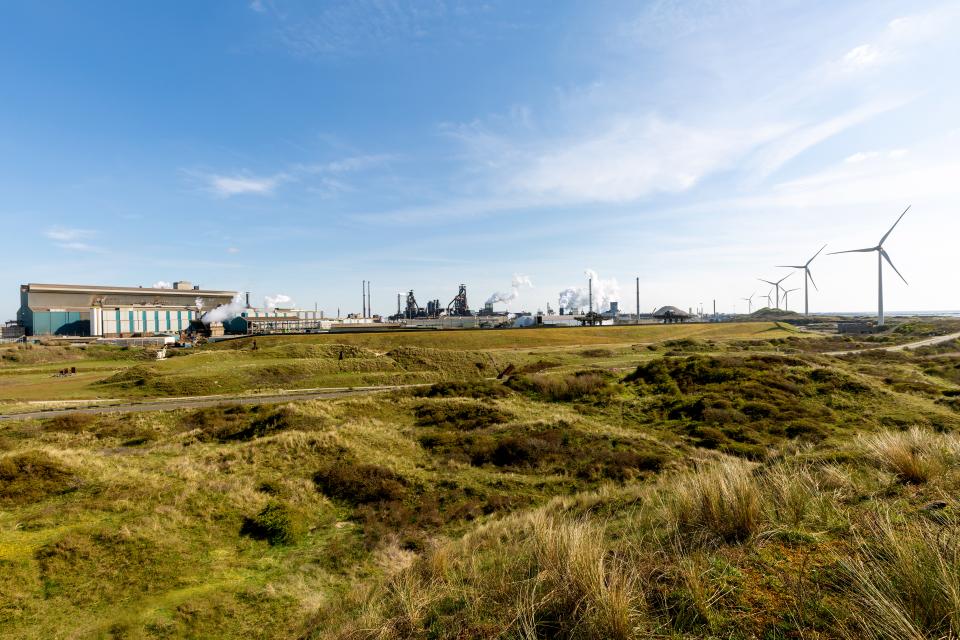EN-Corporate-Sustainability-Sustainable Steel Solutions
Discover Tata Steel’s sustainable solutions to help reduce your Scope 3 emissions.
Tata Steel Nederland has launched Zeremis Carbon Lite, steel with an allocated carbon footprint reduction of up to 100%. The lower CO2 intensity is based on CO2 savings realised within Tata Steel Nederland since 2018 and is veriefied by independent assurance expert DNV. With Zeremis Carbon Lite the company meets a growing demand for low-CO2 steel, for instance by consumer-facing industries such as automotive, packaging and white goods.
The ambition to reduce CO2 emissions by 500 kilotonnes before Tata Steel Nederland commissions its first Direct Reduced Iron (DRI) installation1) should enable the company to supply a minimum of 200 kilotonnes of CO2-neutral equivalent steel on an annual basis. Additional green steel products will follow in the near future.
Market is ready for greener steel
“We see an increasing interest in more environmentally-friendly produced steel in the markets we serve. This is most keen in our consumer-facing customers with their own ambitious CO2 reduction targets as the use of low-CO2 steel enables them to reduce their so-called scope 3 emissions2) and thus make their product offering more sustainable,” says Hans van den Berg, Chairman of the Board of Management of Tata Steel Nederland.
“We firmly believe green steel is the future. We will be making steel in a different way before 2030, with less impact on our immediate surroundings and neighbours. As a result of our current CO2 savings we can already offer our customers a significant amount of high-quality low-CO2 steel. This makes the launch of Zeremis Carbon Lite an important step since passing on our savings to our customers helps us to accelerate our transformation to become a more sustainable steel producer.”
Tata Steel has been working for years to reduce its CO2 emissions. This already makes the IJmuiden steelworks one of the most CO2 efficient in the world today3). The CO2 intensity of the steel produced in IJmuiden is around 7% below the European average and almost 20% below the global average. Despite this, Tata Steel feels the urgency to minimise its environmental impact further.
In order to reduce the emissions of steel production on a large scale, Tata Steel has committed to switch to green hydrogen-based steelmaking. The company targets a CO2 emission reduction of at least 30% by 2030 – when it commissions its first DRI installation – and to emit 75% less CO2 around 2035. That is when the company will transition to a producer of large quantities of high-quality green steel. The ultimate goal is to produce all steel without any CO2 emissions by 2050.
Independent assurance ensures approach
The initial offering of Zeremis Carbon Lite is a 30% reduction in CO2 intensity4) benchmarked against the European average for steel products, for example hot-rolled coil or cold-rolled coil. If customers have higher CO2 emission reduction targets, additional CO2 reduction certificates can be allocated to ensure these targets, even CO2 neutral targets, are met.
The independent assurance by DNV is designed to ensure that Tata Steel’s methodology used to calculate CO2 emission savings is robust, and that the CO2 emission savings are calculated and allocated in an appropriate way. DNV performed a limited assurance engagement in accordance with the International Standard on Assurance Engagements 3000, and used the WRI/WBCSD GHG Protocol for Project Accounting and Reporting Standard as part of the criteria against which DNV made the assurance assessment.
1) DRI technology is a steelmaking technology in which iron can be made using hydrogen instead of coal. When green electricity and hydrogen are used, the CO2 emissions from the primary steel process are considerably lower than when using blast furnaces. DRI technology also makes it possible to use scrap, which benefits circularity.2) Greenhouse gas emissions are categorised into three groups or 'Scopes' by the GHG Protocol. Scope 1 covers direct emissions from owned or controlled sources. Scope 2 covers indirect emissions from the generation of purchased electricity, steam, heating and cooling consumed by the reporting company. Scope 3 includes all other indirect emissions that occur in a company’s value chain. 3) Tata Steel’s IJmuiden works ranks number 2 in CO2 intensity benchmark per site globally (World Steel CO2 data report 2021, BF-BOF route.). 4) Market research shows that a 30% reduction in CO2 intensity is aligned to the scope 3 reduction targets set by many steel users by 2030.
-ends-
For further information: Peter van Boesschoten +31 6 1510 1728 or peter.van-boesschoten@tatasteeleurope.com
About Tata Steel’s European operations
Tata Steel is one of Europe's leading steel producers, with steelmaking in the Netherlands and the UK, and manufacturing plants across Europe. The company supplies high-quality steel products to the most demanding markets, including construction and infrastructure, automotive, packaging and engineering. Tata Steel works with customers to develop new steel products which give them a competitive edge. The Tata Steel Group is among the top global steel companies with an annual crude steel capacity of 34 million tonnes. It is one of the world's most geographically-diversified steel producers, with operations and a commercial presence across the world. The group recorded a consolidated turnover of US $32.83 billion in the financial year ending 31 March, 2022.
